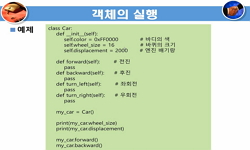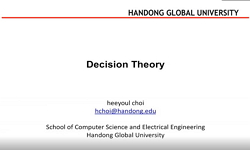The purpose of this study is to present a machine learning process for predicting the insolvency of financial institutions, and to analyze the effect of machine learning techniques and models through empirical analysis. In this process, forward chaini...
http://chineseinput.net/에서 pinyin(병음)방식으로 중국어를 변환할 수 있습니다.
변환된 중국어를 복사하여 사용하시면 됩니다.
- 中文 을 입력하시려면 zhongwen을 입력하시고 space를누르시면됩니다.
- 北京 을 입력하시려면 beijing을 입력하시고 space를 누르시면 됩니다.

저축은행 부실예측 모형의 머신러닝 기법으로의 전환과 예측력 개선의 주요 요인 = A Transition to Financial Distress Prediction Machine Learning Model and Determinants of Forecast Accuracy
한글로보기부가정보
다국어 초록 (Multilingual Abstract)
The purpose of this study is to present a machine learning process for predicting the insolvency of financial institutions, and to analyze the effect of machine learning techniques and models through empirical analysis. In this process, forward chaining cross-validation and SMOTE technique are applied to mitigate over-fitting and imbalanced classification problems respectively. From the empirical analysis using Korean savings bank data from 2008 to 2019, machine learning models can increase bankruptcy prediction power compared to existing logistic regression model. In particular, to account for expected sign constraints, a sign-restricted LASSO model is used. From the sensitivity analysis, I find that the most significant factor in improving the prediction power is the treatment of the imbalanced binary data problem. Therefore, in order to improve the financial distress prediction power using machine learning, it is necessary to put more emphasis on imbalanced data sampling techniques.
국문 초록 (Abstract)
본 연구는 기존의 금융기관 부실예측 모형을 머신러닝 기법으로 전환할 때 필요한 적용 방법론을 체계적으로 정리하고 저축은행을 대상으로 한 실증분석을 통해 대표적인 머신러닝 기법의 ...
본 연구는 기존의 금융기관 부실예측 모형을 머신러닝 기법으로 전환할 때 필요한 적용 방법론을 체계적으로 정리하고 저축은행을 대상으로 한 실증분석을 통해 대표적인 머신러닝 기법의 예측력 개선 효과를 분석한다. 이 과정에서 과대적합 및 편중된 분류 문제를 완화하기 위해 전진 교차검증과 SMOTE 기법을 적용하였다. 또한 부실예측 변수의 경제학적 해석이 가능하도록 부호 제약 Lasso 기법을 이용하여 변수를 축약하였다. 2008년부터 2019년까지의 저축은행 자료를 이용하여 실증 분석한 결과 머신러닝 모형은 기존의 로지스틱 회귀분석 모형에 비해 부실예측력을 높일 수 있음을 확인하였다. 주요 조건의 변화에 따른 민감도 분석 결과 머신러닝 기법에 따른 부실예측력 개선의 주요 요인은 이항 자료 불균형의 조정으로 나타났다. 따라서 기존의 통계적인 부실예측 모형을 머신러닝 기법으로 전환할 때 부실개체 샘플링 기법의 고도화가 중요함을 시사한다.
참고문헌 (Reference)
1 김남현, "저축은행의 레버리지와 부실예측" 한국기업경영학회 27 (27): 145-172, 2020
2 장영광, "상호저축은행 경영실태평가지표 타당성 분석 및 도산 예측" 한국금융학회 9 (9): 1-39, 2004
3 김한용, "불균형적인 이항 자료 분석을 위한 샘플링 알고리즘들: 성능비교 및 주의점" 한국통계학회 30 (30): 681-690, 2017
4 김형준, "기업부도예측과 기계학습" 한국금융공학회 18 (18): 131-152, 2019
5 남주하, "금융기관의 부실화 예측 모형 분석" 4 (4): 33-57, 1998
6 Chen, T., "XGBoost : A Scalable Tree Boosting System" 785-794, 2016
7 Meier, L., "The Group Lasso for Logistic Regression" 70 (70): 53-71, 2008
8 Hastie, T, "The Elements of Statistical Learning" 2003
9 Chicco, D., "Ten Quick Tips for Machine Learning in Computational Biology" 10 (10): 1-17, 2017
10 Cortes, C., "Support-Vector Networks" 20 (20): 273-297, 1995
1 김남현, "저축은행의 레버리지와 부실예측" 한국기업경영학회 27 (27): 145-172, 2020
2 장영광, "상호저축은행 경영실태평가지표 타당성 분석 및 도산 예측" 한국금융학회 9 (9): 1-39, 2004
3 김한용, "불균형적인 이항 자료 분석을 위한 샘플링 알고리즘들: 성능비교 및 주의점" 한국통계학회 30 (30): 681-690, 2017
4 김형준, "기업부도예측과 기계학습" 한국금융공학회 18 (18): 131-152, 2019
5 남주하, "금융기관의 부실화 예측 모형 분석" 4 (4): 33-57, 1998
6 Chen, T., "XGBoost : A Scalable Tree Boosting System" 785-794, 2016
7 Meier, L., "The Group Lasso for Logistic Regression" 70 (70): 53-71, 2008
8 Hastie, T, "The Elements of Statistical Learning" 2003
9 Chicco, D., "Ten Quick Tips for Machine Learning in Computational Biology" 10 (10): 1-17, 2017
10 Cortes, C., "Support-Vector Networks" 20 (20): 273-297, 1995
11 Chawla, N. V., "SMOTE : Synthetic Minority Over-Sampling Technique" 16 (16): 321-357, 2011
12 김영기, "SCOR모형을 활용한 상호저축은행 조기경보시스템 연구" 한국금융연구원 19 (19): 33-68, 2005
13 Breiman, L., "Random Forests" 45 (45): 5-32, 2001
14 Carmona, P., "Predicting Failure in the US Banking Sector: An Extreme Gradient Boosting Approach" 61 (61): 304-324, 2018
15 Petropoulos, A., "Predicting Bank Insolvencies using Machine Learning Techniques" 36 (36): 1092-1113, 2017
16 Suss, J, "Predicting Bank Distress in the UK with Machine Learning" Bank of England 2019
17 Raschka, S, "Model Evaluation, Model Selection, and Algorithm Selection in Machine Learning" 2018
18 Friedman, J., "Greedy Boosting Approximation : A Gradient Boosting Machine" 29 (29): 1189-1232, 2001
19 Hulse, J. V., "Experimental Perspectives on Learning from Imbalanced Data" 935-942, 2007
20 James, G.M, "Constrained Lasso, Technical report" University of Southern California 2013
21 Freund, Y., "Boosting a Weak Learning Algorithm by Majority" 121 (121): 256-285, 1995
22 강선민, "BIS비율과 부채비율: 상호저축은행 부실예측모형" 한국경영학회 42 (42): 1-27, 2013
23 Freund, Y., "A Decision-theoretic Generalization of On-line Learning and an Application to Boosting" 55 (55): 119-139, 1997
동일학술지(권/호) 다른 논문
-
채무조정 상환의 실효율 결정요인 분석:개인워크아웃 제도를 중심으로
- 예금보험공사
- 류동훈
- 2021
- KCI등재
-
예금보험기금의 기금운용방식 다변화 방안:국내채권・해외채권 벤치마크를 중심으로
- 예금보험공사
- 윤선중
- 2021
- KCI등재
-
- 예금보험공사
- 서승환
- 2021
- KCI등재
분석정보
인용정보 인용지수 설명보기
학술지 이력
| 연월일 | 이력구분 | 이력상세 | 등재구분 |
|---|---|---|---|
| 2028 | 평가예정 | 재인증평가 신청대상 (재인증) | |
| 2022-01-01 | 평가 | 등재학술지 유지 (재인증) |  |
| 2019-01-01 | 평가 | 등재학술지 선정 (계속평가) |  |
| 2018-12-01 | 평가 | 등재후보로 하락 (계속평가) |  |
| 2015-01-01 | 평가 | 등재학술지 유지 (등재유지) |  |
| 2011-01-01 | 평가 | 등재학술지 선정 (등재후보2차) |  |
| 2010-01-01 | 평가 | 등재후보 1차 PASS (등재후보1차) |  |
| 2008-01-01 | 평가 | 등재후보학술지 선정 (신규평가) |  |
학술지 인용정보
| 기준연도 | WOS-KCI 통합IF(2년) | KCIF(2년) | KCIF(3년) |
|---|---|---|---|
| 2016 | 0.29 | 0.29 | 0.32 |
| KCIF(4년) | KCIF(5년) | 중심성지수(3년) | 즉시성지수 |
| 0.32 | 0.33 | 0.657 | 0 |





 KCI
KCI







